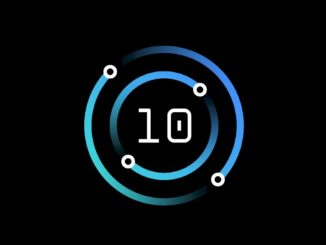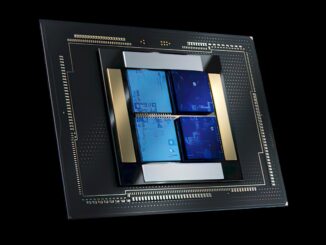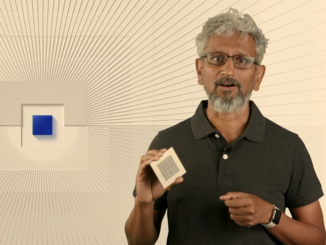
With around 94% of the market share for its Xeon machines, Intel is in quite a position to be forward looking and experimental, especially with one of its segments that embodies both of those descriptions—the supercomputing market.
As is always the case with companies in the high performance computing arena, the push to remind Wall Street and others that HPC is not just the national lab and academic slice is constant, although this accounts for an estimated 40-45% of the HPC segment from Intel’s own figures. This was the case during Intel’s recent Datacenter Day event with select financial analysts who listened during Raj Hazra’s description of what lies ahead for HPC.
In addition to detailing the current landscape for its Xeon and Xeon Phi processors (which he says have doubled market share for accelerators in the last two years) and the upcoming Omni-Path architecture, Hazra spelled out a few key directions the company is taking that embody some of what Intel Datacenter lead, Diane Bryant, spoke of, and what the more HPC-specific Single System Architecture concept Hazra outlined at ISC ’15 embodies.
Although the analyst event was light on technical specifics about upcoming technologies that we have detailed here at The Next Platform, including the Omni-Path architecture, 3D XPoint memory, the Knights Landing chips and their future successors (including Knights Hill for the 2018 Aurora supercomputer that Intel was selected as the prime contractor for), the direction for HPC was made clear—and it is anything but a sidelined market as more commercial companies look to HPC systems for a growing range of workloads. Assuming, of course, their codes are ready for it.
Hazra says that for the HPC market overall, the vast majority of systems are outfitted with Xeon E5-series processors by now, but the Xeon Phi is still gaining traction—and is expected to ramp up further with the future Knights Landin release expected next year. For HPC end users, the Xeon Phi product generated a great deal of early interest as a rival accelerator to the NVIDIA GPUs, which made huge waves in supercomputing over the last five years, but he says that the product use at this phase is being affected by the fact that not all applications are ready for it, even if the interest is there.
Optimistically, though, he says that the programming model is what is giving the Xeon Phi (and its future Knights Landing product) the appeal, and the code will come along. “You have the programming model that Is consistent with the Xeon, therefore, while you have to optimize code for a many-core architecture, you don’t have to port it. So there is already a very large legacy of code that is ready for Xeon Phi optimization as opposed to all of that code which is predominantly written for x86 having to be first ported to a different programming model.”
There are two fundamental shifts that Intel sees as critical to HPC going forward that interestingly, are not necessarily product focused, but more centered around ecosystems and enablement. The first is the fact that a new generation of applications is coming to the fore that are inherently scalable and parallelized and thus able to take advantage of core count bumps. The second is the notion that HPC is becoming more “democratized” both through tools like cloud-based access to HPC resources and in terms of greater accessibility through modernized applications.
As Hazra said, just a couple of years ago it was far more difficult to find true HPC cloud offerings, yet on the flip side, if one were to ask an HPC center or national lab about cloud, they would ask why cloud at all. “That has changed,” he says. “The TCO benefits of a cloud-based infrastructure as now being recognized in traditional supercomputing infrastructure, HPC infrastructure.”We are seeing the major cloud providers in just about two years, 15% to 20%, depending on how count, of HPC actually being consumed in the cloud. And all the major service providers are looking at this as a fundamentally differentiated workload for their infrastructure.”
At the frontline of Intel’s high performance computing business is a renewed emphasis on the commercial HPC market, one that has always been present, but is being pushed forward by new generations of applications that can take advantage of the higher core counts, Omni-Path, and the upcoming 3DXpoint memory, Intel will be bringing to market with its future Knights Landing products. Hazra says that even for companies that are using the same applications, they TCO argument for investing in HPC is strengthening.
“Refreshing infrastructure, even if you’re not going to run new applications, is a tremendous benefit in HPC supercomputing or HPC centers…There are applications waiting for more compute. In very few cases we have the luxury of saying software and algorithms are so far ahead they’re just waiting. My customers tell me to give 10x, 100x, they can use it. And it’s because in certain sectors, applications have now come to their glass ceiling of what they can do with the current generation and poised to actually turn over to the next generation of algorithms.”
Even though many typically associate HPC with government spending, this is the “tip of the iceberg” in many senses as the idea of “to compete, you must compute” stretches farther into both new and established areas where modeling and simulation capability are mandatory elements for competitiveness, says Harza. He points to collaborations between governments and industry as key drivers via examples like Europe’s Horizon 2020 program, which is pushing 97.4 million Euro toward the hardware and software tooling to build future exascale systems, but perhaps more important, a “sustainable European HPC ecosystem.”
Similar movements in India, for example, while not funded to the same grand sums, push the same collaborative approaches toward HPC. Although there has been a renewed emphasis on HPC in the U.S. with Obama’s National Strategic Computing Initative (NSCI), the funding paradigm for this has not yet been spelled out, but Hazra did point to it as an important step toward keeping pace with other countries’ programs.





Be the first to comment